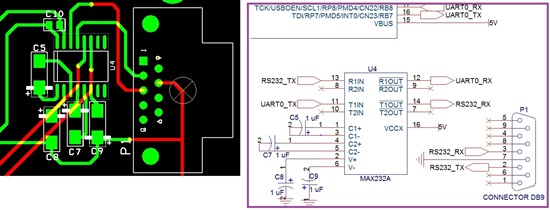Hi Ron.
I have the very same problem of overheating... The conections are checked and I´ve made the same conections that the datasheet...
Is there any chance that if some of the signals entering in Din1 o Din2 rises before Vcc is macking some latching in the MAX3232 that I´m using, and then gets overheat?
We have a complete reel with almost 2500 units... and I have tryed almost 20 of it....
Is there same way solve this?
Here I´ve got the lot written in the reel:
LOT:5397198WCW.
Maybe that helps a little...
PLEASE, LET ME KNOW...


